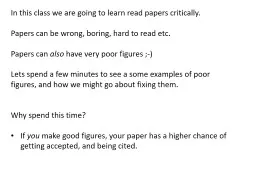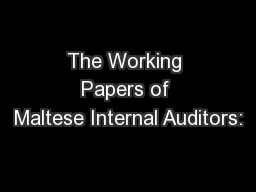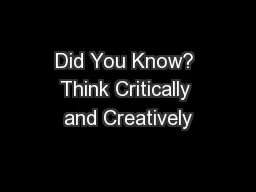PPT-In this class we are going to learn read papers critically.
Author : lindy-dunigan | Published Date : 2017-06-02
Papers can be wrong boring hard to read etc Papers can also have very poor figures Lets spend a few minutes to see a some examples of poor figures and how we might
Presentation Embed Code
Download Presentation
Download Presentation The PPT/PDF document "In this class we are going to learn read..." is the property of its rightful owner. Permission is granted to download and print the materials on this website for personal, non-commercial use only, and to display it on your personal computer provided you do not modify the materials and that you retain all copyright notices contained in the materials. By downloading content from our website, you accept the terms of this agreement.
In this class we are going to learn read papers critically.: Transcript
Download Rules Of Document
"In this class we are going to learn read papers critically."The content belongs to its owner. You may download and print it for personal use, without modification, and keep all copyright notices. By downloading, you agree to these terms.
Related Documents














